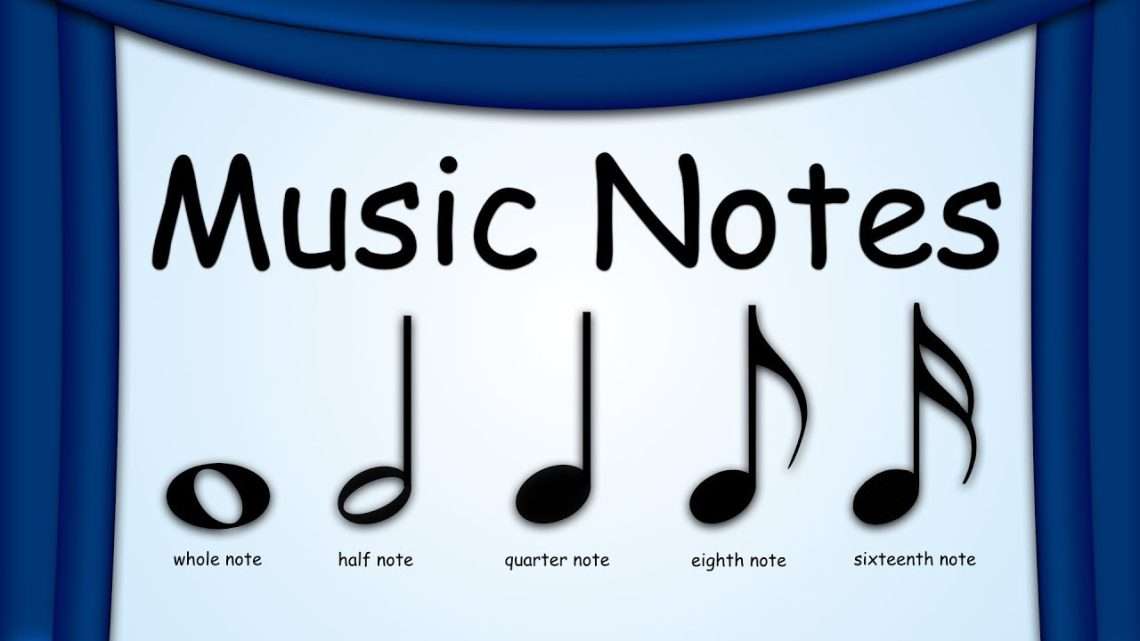
About notes in music
Contents
Thanks to a conventional graphic sign – a note – certain frequencies are not only expressed in writing, but also make the process of creating a musical composition understandable.
Definition
Notes in music are tools for instantly fixing a sound wave of a specific frequency on a letter. Such predetermined recordings form the whole series from which the music is composed. Each note has its own name and a certain frequency, the range of which is 20 Hz – 20 kHz.
To name a specific frequency, it is customary to use not specific numbers, since this is difficult, but a name.
Story
The idea to arrange the names of the notes belongs to the musician and monk from Florence, Guido d’Arezzo. Thanks to his efforts, musical notation appeared in the 11th century. The reason was the difficult training of the choristers of the monastery, from whom the monk could not achieve a harmonious performance of church works. To make it easier to learn compositions, Guido marked sounds with special squares, which later became known as notes.
Note names
Each musical octave consists of 7 notes – do, re, mi, fa, salt, la, si. The idea to name the first six notes belongs to Guido d’Arezzo. They have survived to this day, practically unchanged: Ut, Re, Mi, Fa, Sol, La. The monk took the first syllable from each line of the hymn that the Catholics sang in honor of John the Baptist. Guido himself created this work, which is called “Ut queant laxis” (“To a full voice”).
UT QUEANT LAXIS – NATIVITÀ DI SAN GIOVANNI BATTISTA – B
Ut queant laxis re sonare fibris
Mi ra gestorum fa muli tuorum,
Sol ve polluti la biis reatum,
Sancte Joannes.
Nuntius celso veniens Olympo,
te patri magnum fore nasciturum,
nomen, et vitae seriem gerendae,
order promise.
Ille promissi dubius superni
perdidit promptae modulos loquelae;
sed reformasti genitus peremptae
organa vocis.
Ventris obstruso recubans cubili,
senseras Regem thalamo manentem:
hinc parens nati, meritis uterque,
abdita pandit.
Sit decus Patri, genitaeque Proli
et tibi, compar utriusque virtus,
Spiritus semper, Deus unus,
omni temporis aevo. Amen
Over time, the name of the first note changed from Ut to Do (in Latin, the word “Lord” sounds like “Dominus”). The seventh note si appeared – Si from the phrase Sancte Iohannes.
Where did it come from?
There is a letter designation of notes using the Latin musical alphabet:
- C;
- D;
- E;
- F;
- G;
- A;
- b.
White and black
Keyboard musical instruments have black and white keys. White keys correspond to the seven main notes – do, re, mi, fa, salt, la, si. A little above them are black keys, grouped by 2-3 units. Their names repeat the names of the white keys located nearby, but with the addition of two words:
- sharp is a prefix to the name of the black key to the right of the white key;
- flat – an additional name for the black key, which is located to the left of the white key.
There is one black key for two white keys, which is why it is called a double name. Consider an example: between white do and re is a black key. It will be both C-sharp and D-flat at the same time.
Answers on questions
| 1. What are notes? | Notes are the designation of a sound wave of a specific frequency. |
| 2. What is the frequency range of the notes? | It is 20 Hz – 20 kHz. |
| 3. Who invented the notes? | Florentine monk Guido d’Arezzo, who studied music and taught church chants. |
| 4. What do the names of the notes mean? | The names of modern notes are the first syllables of each line of the hymn in honor of St. John, invented by Guido d’Arezzo. |
| 5. When did notes appear? | In the XI century. |
| 6. Is there a difference between black and white keys? | Yes. If the white keys represent tones, then the black keys represent semitones. |
| 7. What are the white keys called? | They are referred to as seven notes. |
| 8. What are the black keys called? | Just like white keys, but depending on the location relative to the white keys, they carry the prefix “sharp” or “flat”. |
Interesting Facts
The history of music has accumulated a lot of information about the development of musical notation, the use of notes, writing musical works with their help. Let’s get acquainted with some of them:
- Prior to Guido d’Arezzo’s invention of music, musicians used neumes, special signs resembling dots and dashes that were written on papyrus. The dashes served as the prototype of the notes, and the dots denoted the stresses. Nevmas were used together with catalogs where explanations were entered. This system was very inconvenient, so church choristers got confused when learning songs.
- The lowest frequency reproduced by the human voice is 0.189 Hz . This note G is 8 octaves lower than the piano. An ordinary person perceives sounds at a minimum frequency of 16 Hz . To fix this record, I had to use special devices. The sound was reproduced by American Tim Storms.
- The harpsichord is an instrument that has white keys instead of black keys.
- The first keyboard instrument invented in Greece had only white keys and no black ones at all.
- Black keys appeared in the XIII century. Their device was gradually improved, thanks to which many chords and keys appeared in Western European music.
Instead of output
Notes are the main component of any music. In total, there are 7 notes, which are distributed on keyboards into black and white.





